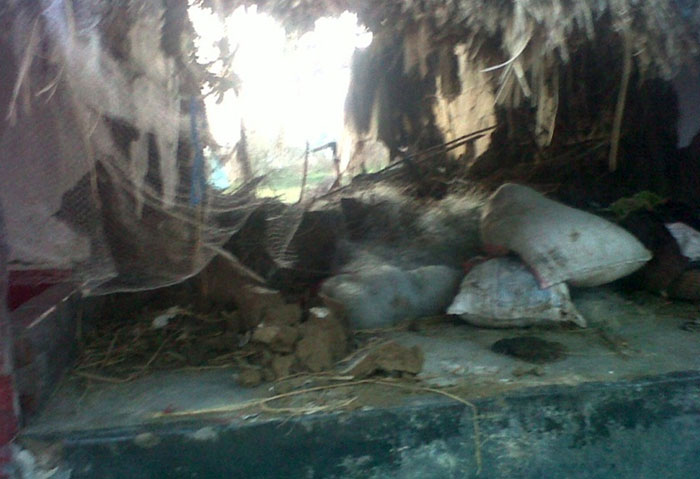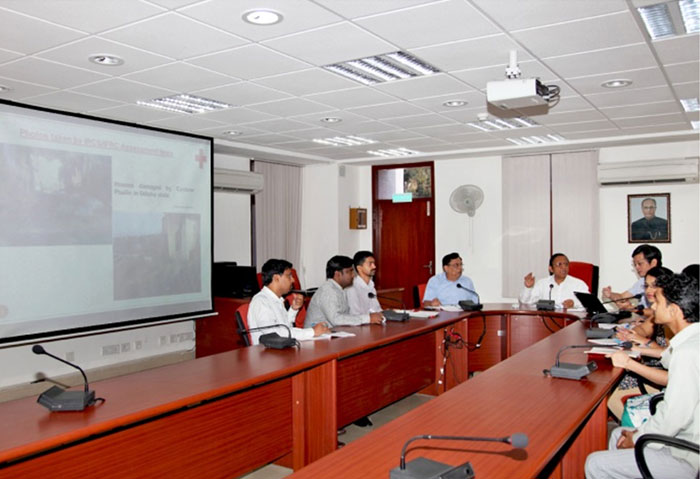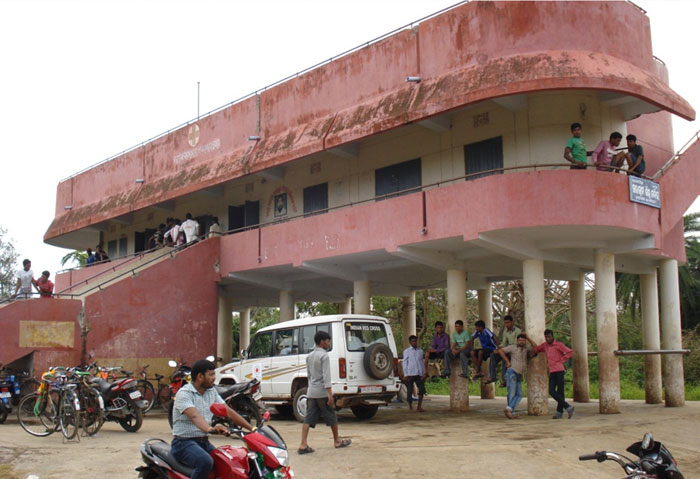
It was the fateful evening of 12th October, 2013 when winds gushing upto a speed of 220 kmph raked up Cyclone Phailin and hit the coastal areas of Odisha and Andhra Pradesh. The devastation could have been massive but for the Indian Meteorological departments early and sound predictions which prompted the Indian government to evacuate nearly 90,00,000 people. This was the biggest evacuation operation done in Indian history accomplished with huge help from the Indian Red Cross volunteers.
Even so, Phailin was classified in the category of VERY SEVERE and more than 2,00,000 kutcha houses were destroyed. There was severe damage to crops estimated at 2400 crores spread over a land area of approximately 6.25 hectares. 25 people lost their lives, 22 in Odisha and 3 in Andhra Pradesh. Communication lines and infrastructure was severely affected.

More than 2,00,000 kutcha houses and crops worth 2400 crores were completely destroyed by the Cyclone Phailin
The worst might be over but problems to be tackled still remain. A huge population now surviving in shelters provided by both Government and Red Cross, needs shelter, drinking water,
clothes, access to hygiene, medical help and phsyco-social support. But the most important task ahead will be to rehabilitate this displaced populace and be provided with shelter and long term livelihood options.
The Indian Red Cross Society was prompt in its response. The state branches were given warnings about the Cyclone and ensuing situation on 10th October. The Emergency Control Room at IRCS(NHQ) for coordination of Response was immediately activated and National Response Team members (NDRT & NDWRT) alerted for immediate deployment. Review meetings are being held with continuous updates from the state branches.
On Ground Zero, 75 shelters were made by the Indian Red Cross Society in which 1.5 lakh people are being housed. The Red Cross volunteers aided the government agencies in evacuation of approximately 2,00,000 people.

Dr S P Agarwal, Secretary General, Indian Red Cross Society, presiding a review meeting at the National Headquarters
In its on-going efforts, Red Cross has trained the communities in the vicinity of cyclone shelters in first aid, Search and rescue, disaster preparedness, management of
Cyclone shelters etc. Every cyclone shelter has a task force which handles first aid, search & Rescue for the missing community members. A 30-40 community members committee manages these shelters which have been provided with search and rescue equipment and utensils. In these cyclone shelters there are separate living areas for men and women and separate toilets as well. They have rain water harvesting system installed which ensures supply of water to the people in the shelters. Hand pump is provided in each cyclone shelter to lift water from collection tank to the second floor.

One of the 75 Red Cross shelters in Odisha
For immediate needs, the IRCS is providing 16000 tarpaulin sheets, 5500 family packs and 6 Water Sanitation units. Two water and sanitation experts have been stationed at the affected areas to help and supervise the installation of these water sanitation units. But even with this relief plan The Red Cross Society will only be able to help about 20,000 extremly marginalised families which is just ten percent of the total needy population. And any help right now is more than welcome.
Donations to the Indian Red Cross Society for Cyclone Phailin relief can be made by Cheques/Demand Drafts favouring “Secretary General, Indian Red Cross Society”. Such donations are eligible for tax deduction under Sec 80G of the Indian IT Act.